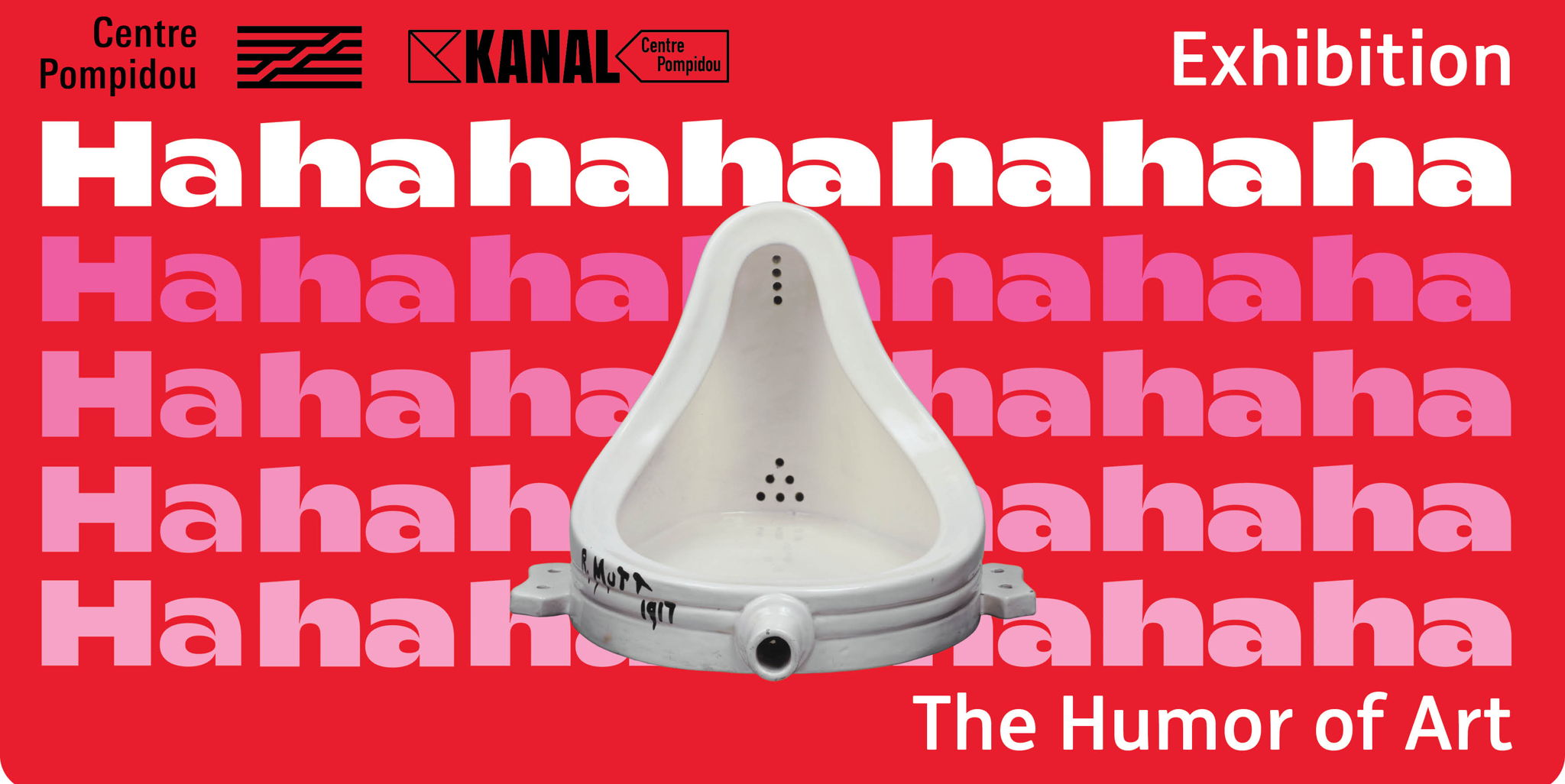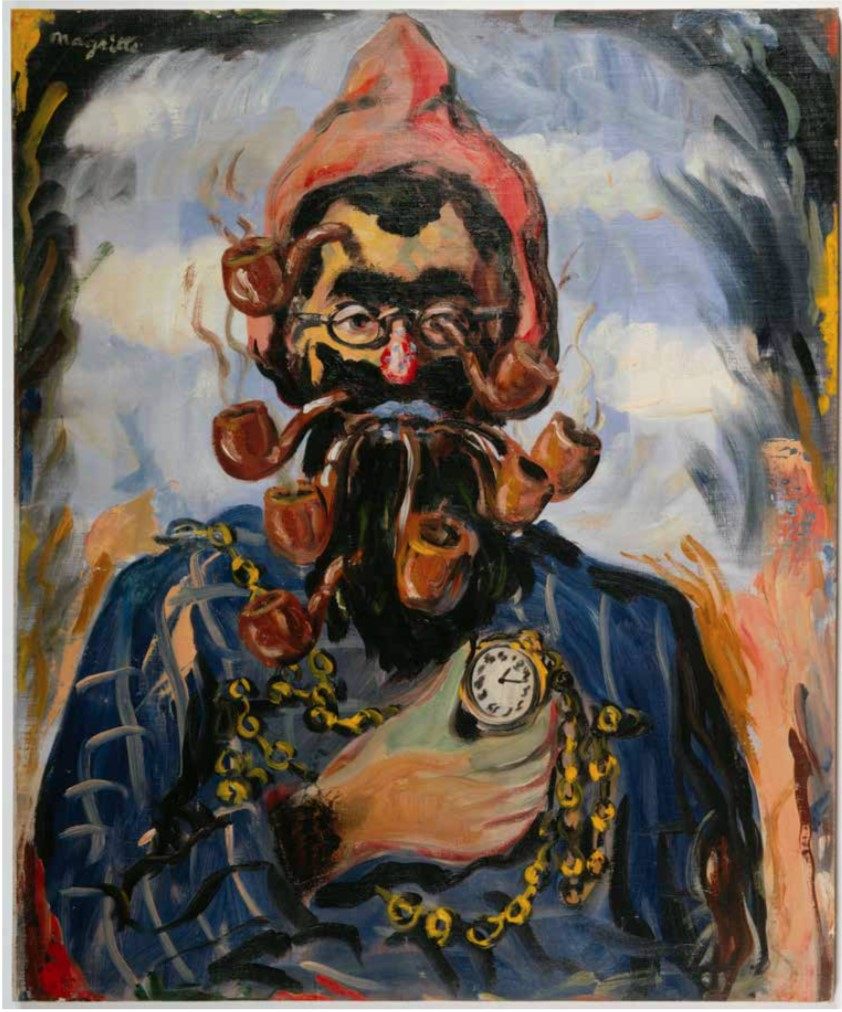This autumn, the ING Art Center is putting optimism at the centre with the new exhibition Hahaha. The Humor of Art
"Nothing is serious enough to be taken seriously.” Marcel Duchamp
Tuesday 14 September 2021 - Brussels - For the first time in a year and a half, the doors of the ING Art Center on Mont des Arts in Brussels will open tomorrow for the exhibition Hahaha. The Humor of Art. The exhibition, with more than 200 works, looks at how different artistic movements, from the 19th century to the present day, have incorporated humor into the creative process in order to challenge established aesthetic canons. From the Great Zwanz Exhibition (1885) to Dada, from the painting of the donkey Lolo to Marcel Duchamp's ready-mades, from René Magritte to Marcel Broodthaers, from Andrea Fraser's lecture-performances to Wim Delvoye's works to play, Hahaha. The Humor of Art highlights the revolutionary potential of laughter. The exhibition is the result of a unique collaboration between ING Belgium, KANAL-Centre Pompidou and the Centre Pompidou. Children and adults can discover the whole exhibition in an unusual way through laughter yoga and improvisation workshops, among other things. Upon request of ING Belgium, the comedian Alex Vizorek and presenter and art enthusiast Stijn Van de Voorde are the patrons of the exhibition, which runs until 16 January 2022.
The exhibition allows us to revisit some of the key works of the modern avant-garde through the filter of humor, but also to discover others that have never been exhibited in Belgium. In addition to the works from the Centre Pompidou's collections, which form the main core of the project, there are some twenty works by Belgian artists from the ING Belgium collection, private collections or from the artists themselves, such as Wim Delvoye or Guillaume Bijl.
Taking humor seriously
“Hahaha aims to give laughter its rightful place in the history of modern and contemporary art. By relying on laughter, the artists of the avant-garde made it one of the main driving forces of modernity. Yet, until today, humor has been reduced to a ghostly presence in the grand modernist narrative.”
Nicolas Liucci-Goutnikov, curator of the exhibition
To illustrate how humor shakes the established order, the exhibition is structured around seven themes: 19th century caricature, puns, artwork as toys, hoaxes, parody, derision and master jesters.
The beginnings of art humor and the salons comiques
Art has been making people laugh since the 18th century: in Paris, early cartoons target an art world in the process of being formed and make fun of works, artists, collectors, art critics and viewers. Parodic exhibitions, such as Les Arts incohérents in Paris and the Great Zwans Exhibitions that originated in Brussels during the Belle Époque, presented themselves as farcical counterparts to the ‘serious’ salons. Satirical criticism was then directed against art from the outside, by the press. The situation changed in the 1910s with the emergence of the Dada mindset, which joyfully challenged everything. Various artists, eager to overturn the founding values of the fine arts and to reveal the sector’s pretence, overtly integrated laughter into their practice.
Piet Mondrian and parody
"Piet, Piet, Piet, Piet, Piet, Piet, Piet, Peep, Pity, Piet. Well, I Salvador, will tell you this, that Piet with one “i” less would have been nothing but ‘pet’ (which is the French word for a fart)."
Salvador Dali on Piet Mondrian
In the section devoted to parody, the work of the Dutch neoplastic painter Piet Mondrian stands out among the most parodied, notably by Ernest T. and surrealist Marcel Mariën, who devoted his "Mondrianities" to it. Mondrian's rigorous geometry and blue, red and yellow colours are combined in The Venus of Amersfoort with the plaster contours of a Venus de Milo. The title also refers to Mondrian's birthplace.
The Swiss artist Sylvie Fleury replaces Mondrian's primary colours with synthetic fur, brutally soiling the purity of neoplasticism.
"The practice of parody carries with it the possibility of a complete demythification of the history of art. Fleury's transvestism also points to another aspect of the history of modern art: the exclusion of women from the canonical narrative of the history of art."
Anne Petre, Head of Art at ING in Belgium
René Magritte and his ‘période vache’
Le Stropiat is part of René Magritte's so-called ‘vache’ period (meaning: malicious). In 1948, invited (at last) to exhibit at the Galerie du Faubourg in Paris, the most famous Belgian surrealist decided to thumb his nose at the "capital of the arts" which had snubbed him for so long by presenting some forty paintings and gouaches in garish tones, produced in a hurry. The gallery did not sell any paintings and Magritte quickly turned the page on this sacrilegious episode.
More than an exhibition
The exhibition's patrons, presenter and art enthusiast Stijn Van de Voorde and comedian Alex Vizorek, broaden our view and question the various ways in which humour becomes art in our society.
ING also developed the Hahahagenda so that young and old can discover the exhibition in an unusual and original way. These range from workshops for children and schools to laughter yoga, improvisations in the theme of humor and concerts by students of the Queen Elisabeth Music Chapel.
The expo will also continue beyond the walls of the ING Art Center: a walking trail in Brussels will connect various works of art with historical sites in our capital. You can discover it via an app developed with KANAL-Centre Pompidou and Orange Belgium. You can see how Marcel Duchamp meets Manneken Pis. Or discover Bottle-bottle Opener by Georges Brecht at the heritage café Het Goudblommeke in papier - loved by Magritte and Scutenaire.
Practical details
- Hahaha. The Humor of Art
- Open to the public from 15 September 2021 to 16 January 2022
- ING Art Center, Place Royale 6, 1000 Brussels.
- ing.be/art
- Wednesday to Sunday from 10:00 am to 6:00 pm
Open every Friday evening until 9 pm - Rates: between €0 and €12; 50% for all ING customers
- Various health measures following government guidelines will be taken to ensure the safety of visitors
Hahaha. The Humor of Art_Press release
PDF - 329 Kb
Hahaha. L'humour de l'art_Dossier de presse (FR)
PDF - 17 Mb
Hahaha. De humor van de kunst_Persdossier (NL)
PDF - 16 Mb





